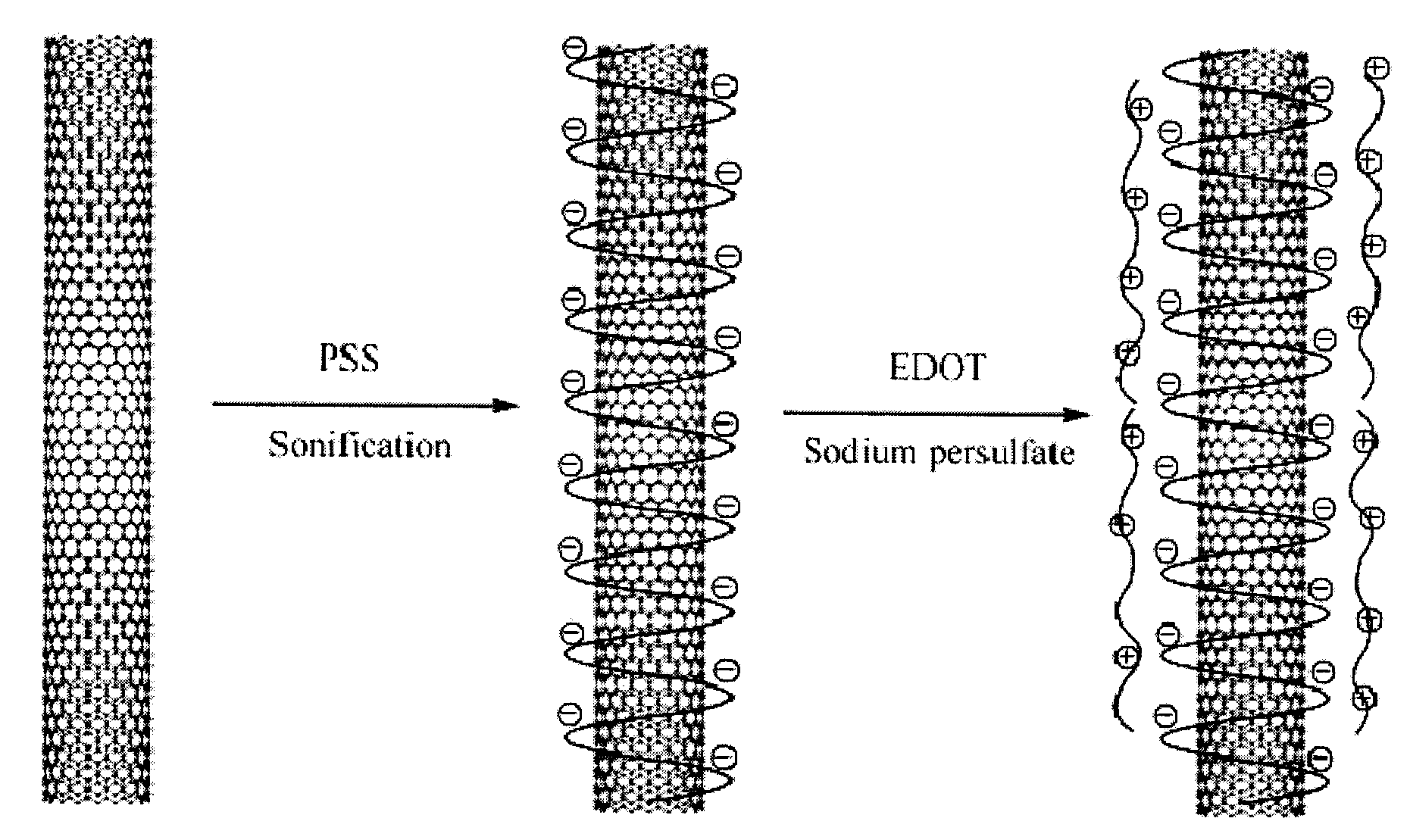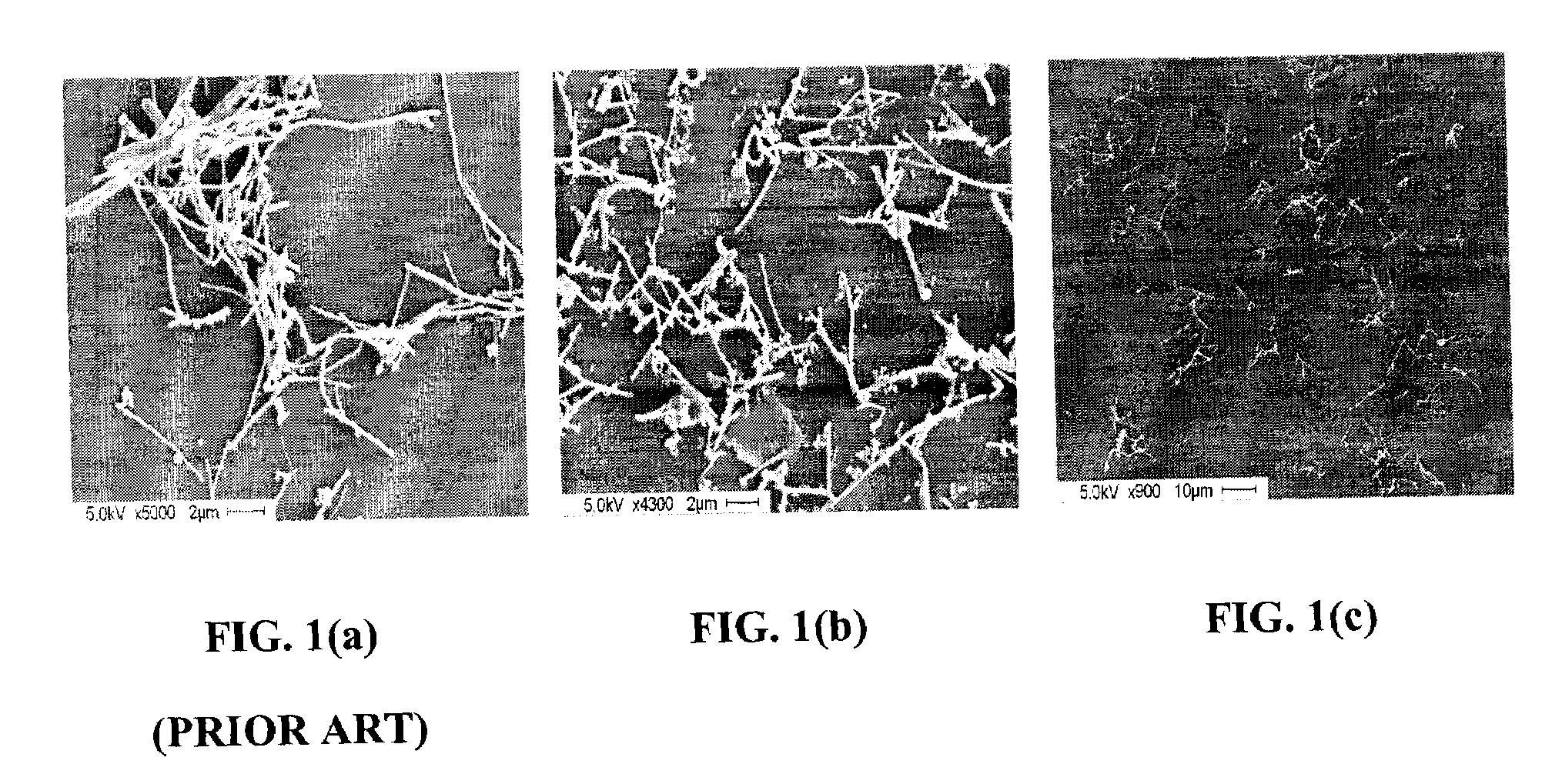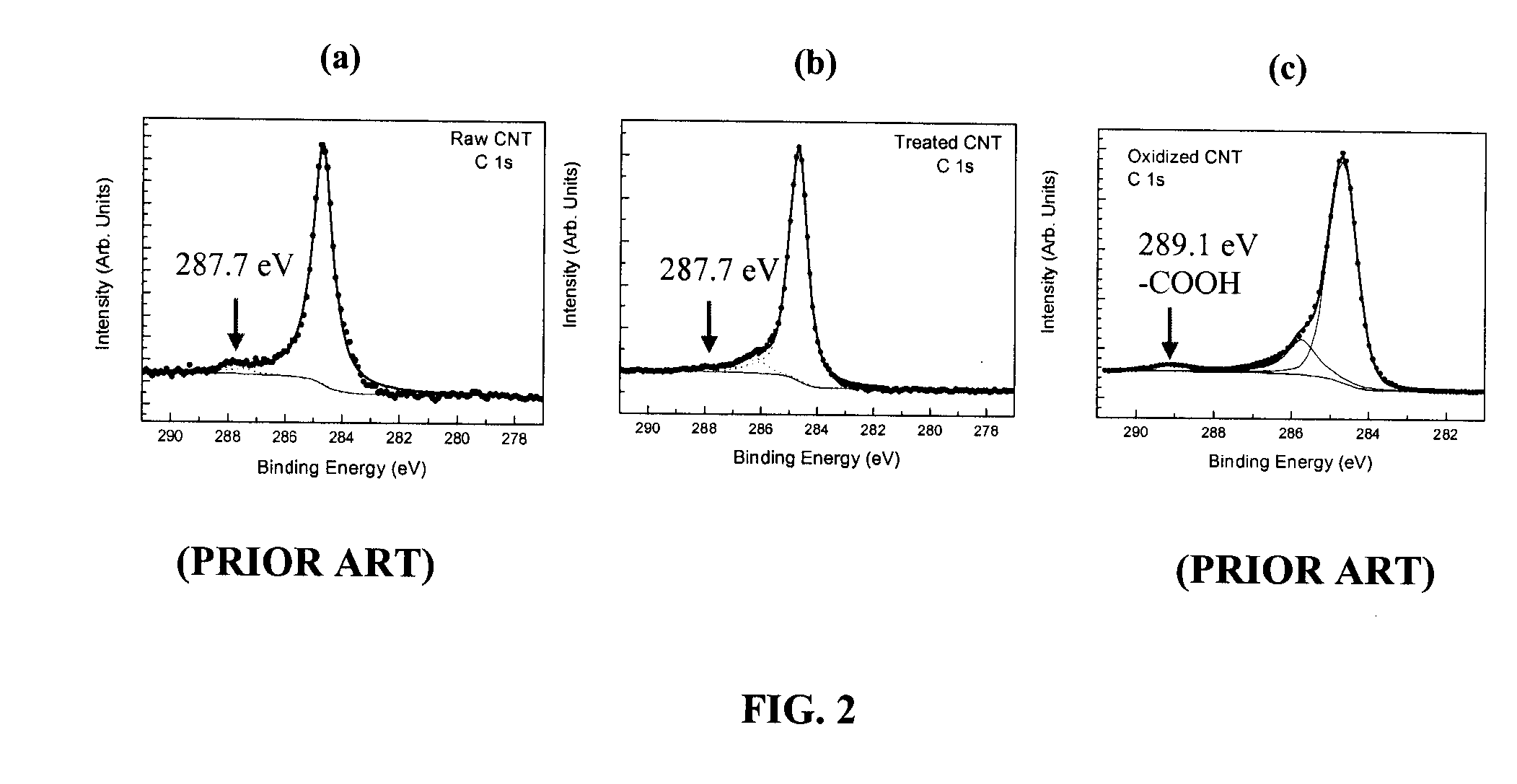Polymer composites having highly dispersed carbon nanotubes and methods for forming same
a carbon nanotube, highly dispersed technology, applied in the direction of non-metal conductors, conductors, transportation and packaging, etc., can solve the problems of reducing the electrical and mechanical properties of the nanocomposite, preventing the potential of these nanocomposites from being fully exploited, and disrupting the conjugated electronic structure. , to achieve the effect of increasing volatility
- Summary
- Abstract
- Description
- Claims
- Application Information
AI Technical Summary
Benefits of technology
Problems solved by technology
Method used
Image
Examples
examples
[0036]It should be understood that the Examples described below are provided for illustrative purposes only and do not in any way define the scope of the invention.
Dispersion of Carbon Nanotubes in Polymer Matrices Using Trifluoroacetic Acid as a Co-Solvent
[0037]A dispersion of MWNTs was tested in a variety of organic solvents including N,N-dimethylformamide (DMF), dichloromethane, hexanol, toluene, tetrahydrofuran, and acetonitrile using sonication. The MWNTs used were CNTs generally with diameters of 110-150 nm and lengths of 5-9 μm. The aspect ratio of these nanotubes was around 100. Although the CNTs show some good dispersion in some solvents such as DMF and hexanol, it is believed that the good dispersion is due to the high viscosity of the solvents. Unfortunately, both DMF and hexanol are not good solvents for polymer processing, because both solvents have high boiling points and / or high viscosity. After adding 5-10% TFA into the organic solvents, overall, the dispersity of th...
PUM
| Property | Measurement | Unit |
|---|---|---|
| boiling point | aaaaa | aaaaa |
| volume % | aaaaa | aaaaa |
| boiling point | aaaaa | aaaaa |
Abstract
Description
Claims
Application Information
 Login to View More
Login to View More - R&D
- Intellectual Property
- Life Sciences
- Materials
- Tech Scout
- Unparalleled Data Quality
- Higher Quality Content
- 60% Fewer Hallucinations
Browse by: Latest US Patents, China's latest patents, Technical Efficacy Thesaurus, Application Domain, Technology Topic, Popular Technical Reports.
© 2025 PatSnap. All rights reserved.Legal|Privacy policy|Modern Slavery Act Transparency Statement|Sitemap|About US| Contact US: help@patsnap.com



